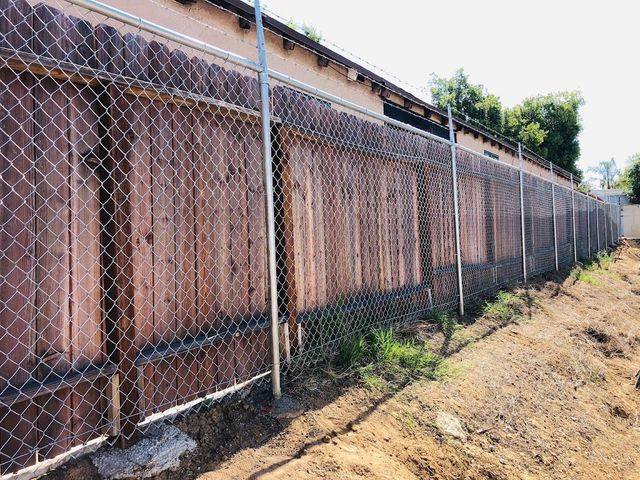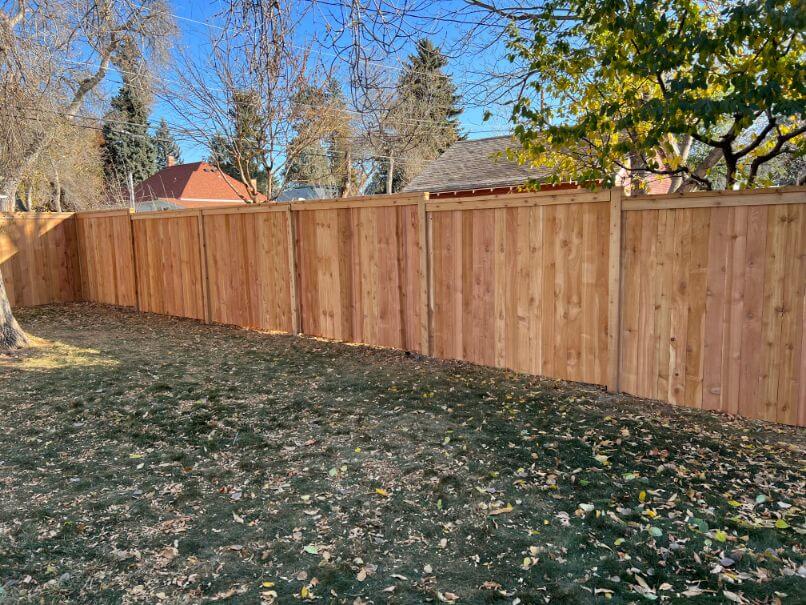All Categories
Featured
As sustainability comes to be an increasingly crucial consider home and commercial building design, the demand for environment-friendly items remains to climb. This includes materials for outdoor areas, particularly for fencings. While traditional fencing options like timber, steel, and plastic can have significant ecological downsides, there are several sustainable and green alternatives offered. Picking environmentally liable fencing materials helps lower your carbon impact and supports conservation efforts. Let's discover several of the ideal environmentally friendly fencing choices that promote sustainability while likewise using toughness and style.
Advantages: Bamboo requires very little water, pesticides, and plant foods to expand. It is naturally degradable, lowering waste at the end of its life process. It is immune and additionally durable to rot, making certain durability with correct care. Considerations: Bamboo might not be optimal for locations with rough wintertimes or extreme cold, as it can come to be fragile and fracture in freezing temperatures. 2. Recycled Materials Fencing. Fencings made from recycled materials, such as post-consumer plastics, recovered wood, or recycled metal, are becoming significantly popular in eco-conscious designs. These materials lower waste, save resources, and minimize the demand for the extraction of raw products, which is beneficial for the setting. By repurposing existing materials, you contribute to reducing the need for new, energy-intensive manufacturing processes.
Benefits: Using recycled products aids divert waste from garbage dumps, minimizes ecological impact, and can reduce your carbon footprint. It is likewise an economical service in some instances. Considerations: The aesthetic of recycled material fences can differ, and some may not achieve the same natural appearance as typical wood fencings. However, several manufacturers now supply styles that replicate the appearance of wood or rock. 3. Composite Fencing. Composite fence is made from a mix of timber fibers and plastic, usually sourced from recycled material. This kind of fence provides the appearance of wood with very little maintenance, while additionally being eco-friendly. Composite materials are immune and commonly long-lasting to the aspects, decreasing the demand for frequent substitute or treatment with chemicals.
![]()
Conveniences: Composite fences are long lasting, low-maintenance, and can be made from recycled material, assisting lower waste. They do not need damaging chemicals for conservation, unlike dealt with wood. Factors to consider: While composite fence is long lasting, it often tends to be extra pricey in advance compared to typical timber. Nevertheless, its long life and reduced upkeep may make it an extra affordable choice over time. 4. Cedar and Redwood Fence. Cedar and redwood are popular selections for environmentally-conscious secure fencing, as both materials are normally long lasting, immune to decay, and require marginal chemical treatments. These timbers can be sustainably harvested from responsibly taken care of woodlands, ensuring their eco-friendly status. They likewise have an all-natural charm that many house owners value, with rich colors and appearances that enhance aesthetic appeal.
Perks: Cedar and redwood fences are long-lasting, naturally pest-resistant, and have a low ecological influence when gathered sustainably. They likewise have an ageless visual and can blend perfectly right into natural landscapes. Factors to consider: While cedar and redwood are much more environmentally friendly than various other kinds of timber, they are still timber items and need appropriate maintenance to stop decay. The price might also be greater compared to various other materials. 5. Living Fences (Hedges and Hedges) For those looking for a much more eco-friendly and all-natural choice, living fencings, or hedgerows, are an exceptional selection. Popular choices for living fencings include boxwood, bamboo, and privet.
Benefits: Living fencings enhance air high quality, add to biodiversity, and use an all-natural appearance that mixes seamlessly with the landscape. They also lower sound pollution and assist regulate temperatures in your yard. Factors to consider: Living fencings call for regular maintenance, such as trimming and watering, and might not appropriate for every environment. They likewise require time to establish before they can offer full privacy. 6. Stone and Block Fencing (Recovered) Stone and brick are exceptionally durable products, and making use of recovered stone or brick can be an environment-friendly way to create a fencing. By recycling these materials from old buildings or structures, you reduce the need for new resources and decrease waste. Rock and block fencings are solid, need little upkeep, and offer an ageless appearance to any kind of building.
![]()
Conveniences: Reclaimed stone and brick fences are incredibly durable, low-maintenance, and offer exceptional personal privacy and protection. They are likewise energy-efficient, as they help manage temperature level by serving as all-natural insulators. Considerations: Installation of rock and block fencings can be a lot more labor-intensive and pricey than other materials. Furthermore, these fences might not be ideal for all residential properties because of the weight and the need for proper setup. Conclusion. Bamboo, recycled materials, composite secure fencing, and cedar or redwood all use lasting alternatives to typical products. By selecting one of these sustainable fencing materials, you're making a positive effect on the atmosphere while producing a functional and beautiful exterior area.
- Bamboo Fencing. Bamboo is one of the most eco-friendly products readily available for fencing. Bamboo fences are strong, naturally immune to parasites, and offer a lovely, all-natural visual.
Advantages: Bamboo requires very little water, pesticides, and plant foods to expand. It is naturally degradable, lowering waste at the end of its life process. It is immune and additionally durable to rot, making certain durability with correct care. Considerations: Bamboo might not be optimal for locations with rough wintertimes or extreme cold, as it can come to be fragile and fracture in freezing temperatures. 2. Recycled Materials Fencing. Fencings made from recycled materials, such as post-consumer plastics, recovered wood, or recycled metal, are becoming significantly popular in eco-conscious designs. These materials lower waste, save resources, and minimize the demand for the extraction of raw products, which is beneficial for the setting. By repurposing existing materials, you contribute to reducing the need for new, energy-intensive manufacturing processes.
Benefits: Using recycled products aids divert waste from garbage dumps, minimizes ecological impact, and can reduce your carbon footprint. It is likewise an economical service in some instances. Considerations: The aesthetic of recycled material fences can differ, and some may not achieve the same natural appearance as typical wood fencings. However, several manufacturers now supply styles that replicate the appearance of wood or rock. 3. Composite Fencing. Composite fence is made from a mix of timber fibers and plastic, usually sourced from recycled material. This kind of fence provides the appearance of wood with very little maintenance, while additionally being eco-friendly. Composite materials are immune and commonly long-lasting to the aspects, decreasing the demand for frequent substitute or treatment with chemicals.

Conveniences: Composite fences are long lasting, low-maintenance, and can be made from recycled material, assisting lower waste. They do not need damaging chemicals for conservation, unlike dealt with wood. Factors to consider: While composite fence is long lasting, it often tends to be extra pricey in advance compared to typical timber. Nevertheless, its long life and reduced upkeep may make it an extra affordable choice over time. 4. Cedar and Redwood Fence. Cedar and redwood are popular selections for environmentally-conscious secure fencing, as both materials are normally long lasting, immune to decay, and require marginal chemical treatments. These timbers can be sustainably harvested from responsibly taken care of woodlands, ensuring their eco-friendly status. They likewise have an all-natural charm that many house owners value, with rich colors and appearances that enhance aesthetic appeal.
Perks: Cedar and redwood fences are long-lasting, naturally pest-resistant, and have a low ecological influence when gathered sustainably. They likewise have an ageless visual and can blend perfectly right into natural landscapes. Factors to consider: While cedar and redwood are much more environmentally friendly than various other kinds of timber, they are still timber items and need appropriate maintenance to stop decay. The price might also be greater compared to various other materials. 5. Living Fences (Hedges and Hedges) For those looking for a much more eco-friendly and all-natural choice, living fencings, or hedgerows, are an exceptional selection. Popular choices for living fencings include boxwood, bamboo, and privet.
Benefits: Living fencings enhance air high quality, add to biodiversity, and use an all-natural appearance that mixes seamlessly with the landscape. They also lower sound pollution and assist regulate temperatures in your yard. Factors to consider: Living fencings call for regular maintenance, such as trimming and watering, and might not appropriate for every environment. They likewise require time to establish before they can offer full privacy. 6. Stone and Block Fencing (Recovered) Stone and brick are exceptionally durable products, and making use of recovered stone or brick can be an environment-friendly way to create a fencing. By recycling these materials from old buildings or structures, you reduce the need for new resources and decrease waste. Rock and block fencings are solid, need little upkeep, and offer an ageless appearance to any kind of building.

Conveniences: Reclaimed stone and brick fences are incredibly durable, low-maintenance, and offer exceptional personal privacy and protection. They are likewise energy-efficient, as they help manage temperature level by serving as all-natural insulators. Considerations: Installation of rock and block fencings can be a lot more labor-intensive and pricey than other materials. Furthermore, these fences might not be ideal for all residential properties because of the weight and the need for proper setup. Conclusion. Bamboo, recycled materials, composite secure fencing, and cedar or redwood all use lasting alternatives to typical products. By selecting one of these sustainable fencing materials, you're making a positive effect on the atmosphere while producing a functional and beautiful exterior area.
Latest Posts
Uncover Reduce Expenses on Car Maintenance with Montclare Auto Repair’s Special Deals
Published May 28, 25
1 min read
Explore Your Wyoming Banking Partner – Your Path to Superior Financial Services in Wyoming
Published May 26, 25
1 min read
Discover Your Financial Partner at WyHy – Key Advantages for Your Future
Published May 23, 25
1 min read
More
Latest Posts
Uncover Reduce Expenses on Car Maintenance with Montclare Auto Repair’s Special Deals
Published May 28, 25
1 min read
Explore Your Wyoming Banking Partner – Your Path to Superior Financial Services in Wyoming
Published May 26, 25
1 min read
Discover Your Financial Partner at WyHy – Key Advantages for Your Future
Published May 23, 25
1 min read